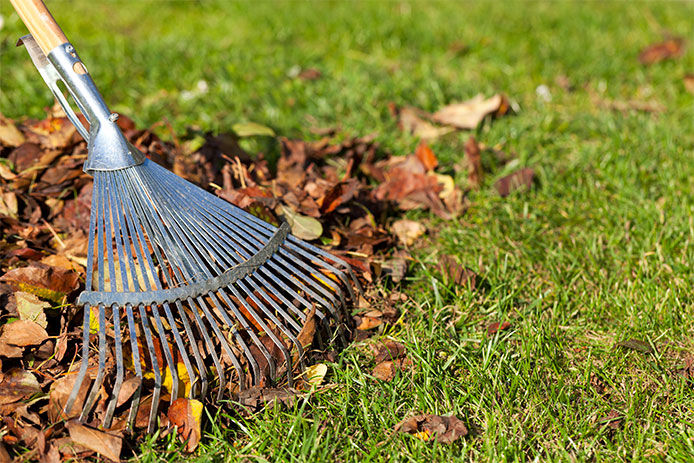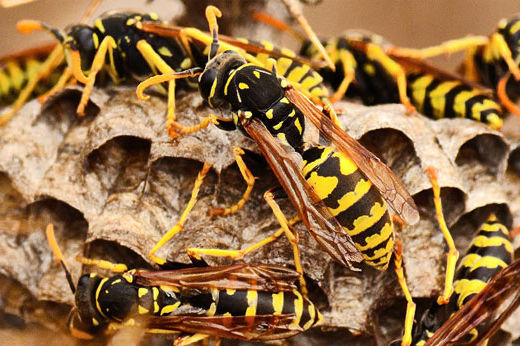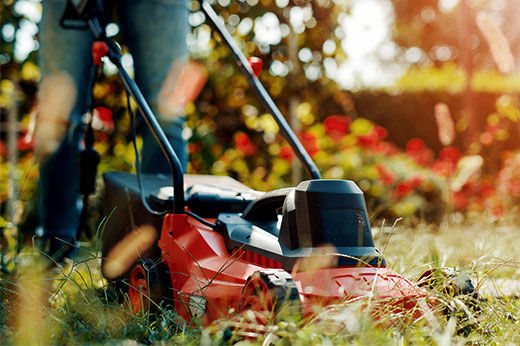Snowblower Buying Guide: Spend Less Time Shoveling
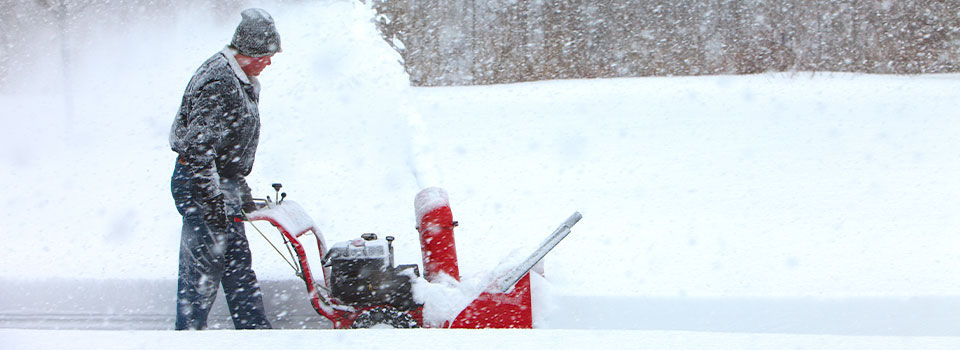
If you live in a part of the country that gets more than a few inches of snow at a time, you’ve probably come to dread shoveling out your driveway and walkways. Without shoveling, though, it’s all too easy to slip on snow that’s turned into ice and end up getting injured. Don’t let the regular winter routine wear you down this year — invest in the right snowblower for you. Continue reading to learn what all those specifications for each snowblower model really mean.
Gas Vs Electric
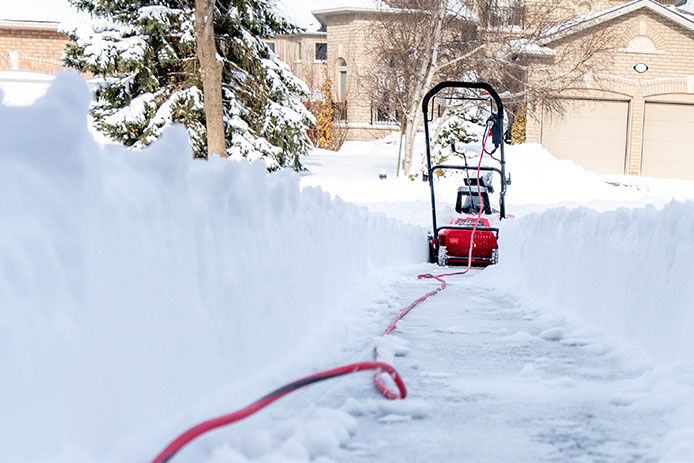
First, consider what kind of fuel you’d like to use to power the snowblower. Electric snowblowers are convenient because they’re quick to warm up and don’t require refilling. But like corded lawnmowers, corded snowblowers are limited in range to the length of the recommended extension cord. You’ll also need a cold-rated cord that won’t become brittle from being dragged through the snow. Although cordless battery-powered electric snowblowers free you from the cord, they’re far more limited in power and tend to require replacement batteries every few years due to the struggle of operating in the cold.
Gas snowblowers are the most powerful, but you’ll trade the power for a little extra noise and exhaust. They’re also not limited by cords like corded electric blowers. If you’re looking to tackle more than 6 inches of snow at once or need long-distance throwing power, stick with a gas snowblower. You’ll have to do a little more maintenance on these models, but it’s worth the trade-off for homeowners who need to move a lot of snow at once.
Snow Blower Vs Snow Thrower
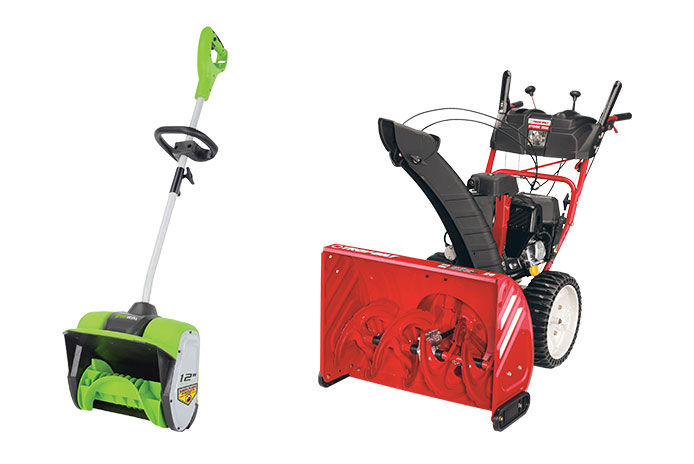
The simplest form of snowblower is commonly called a snow thrower because it tosses snow with a movement similar to shoveling. The same auger used to scoop snow up into the machine also propels it out of the chute. While these snowblowers are the lightest and easiest to maneuver, especially for people with lower upper body strength, they’re also limited in both the width and height of snow they can handle. The snow is only tossed a few feet from most snow throwers as well. Stick to using these snowblowers on paved surfaces like asphalt driveways only. Since the auger on the single-stage snowblower makes contact with the ground, it can fling gravel or disturb frozen turf.
If you need long-distance clearance or a wide path cleared at once, upgrade to a two-stage or three-stage snowblower.
Two-Stage Vs Three-Stage Snowblowers

The two-stage snowblower is the most common homeowner model, whether it’s gas-powered or electric. This equipment scoops up the snow with an auger like a snow thrower, but there’s an impeller inside to act as the second stage. Snow is thrown much further out of the chute and at a higher rate, allowing the snowblower to handle more snow at once. You’ll find that prosumer and professional two-stage snowblowers are also available. Both of these snowblowers work on gravel and turf areas without damage because the augers don’t need to make contact with the ground. This means, however, that it’s impossible to get every last bit of snow, and you may experience refreezing over paved areas. You may want to keep an inexpensive single-stage snowblower on hand for sensitive paved paths where you need complete snow removal.
Three-stage snowblowers are generally used by commercial facility managers and not homeowners. They feature the largest intakes and accelerators that move tremendous amounts of snow per minute. All that snow and ice flying at such high speed can damage glass and siding when used too close to a home, so stick to a single- or two-stage snowblower for most home uses.
Optional Snowblower Features
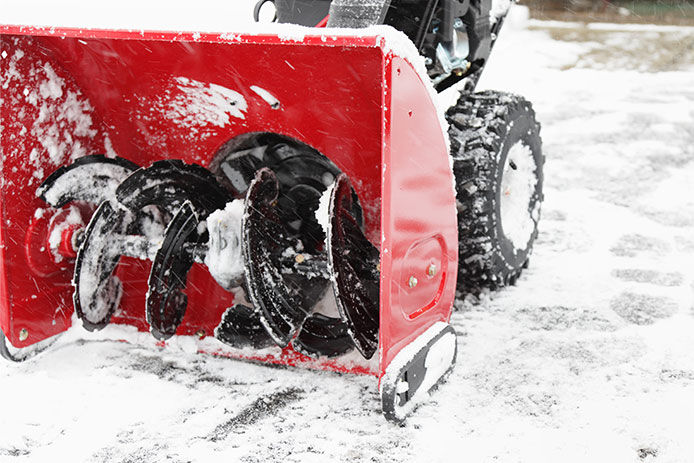
Snow chains are a good option for most snowblowers, but you’ll find that most snow throwers aren’t designed to mount them. Two-stage snowblowers generally feature them as an option, which may require tire upgrades. If you want to make specific piles or rows of snow as you work, look for a joystick control over the chute. Self-propelled drive systems are standard for most two-stage blowers, but they’re recommended when available for single-stage snowblowers as well. Automatic starts are required for electric models and optional on many gas snowblowers. They’re recommended because pull starts are particularly difficult in cold weather, even on equipment designed for winter use. Finally, consider an adjustable auger if you need careful control over the depth of snow removal.
Now you’re ready to head out there and get the perfect snowblower before winter arrives.

